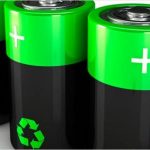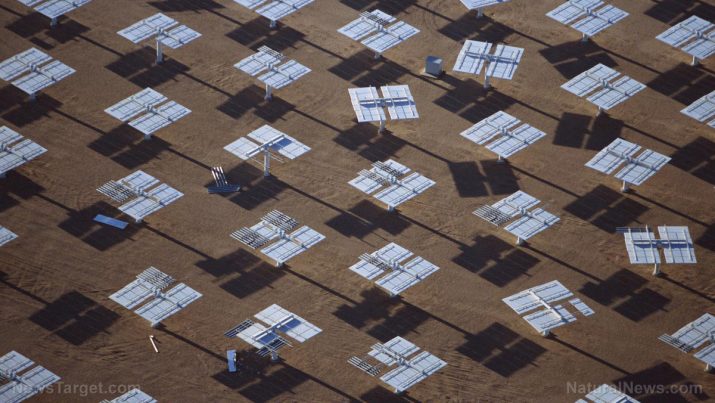
Saudi Arabia to create the world’s largest solar project as the kingdom tries to wean off its dependence on oil
Thursday, May 17, 2018 by Michelle Simmons
http://www.futuresciencenews.com/2018-05-17-saudi-arabia-to-create-the-worlds-largest-solar-project-as-the-kingdom-tries-to-wean-off-its-dependence-on-oil.html

Saudi Arabia, in partnership with Japanese conglomerate SoftBank, is planning to create the largest solar project in the world, as the kingdom tries to move away from its dependence on oil, according to a report by Bloomberg. Saudi Crown Prince Mohammed Bin Salman and SoftBank founder Masayoshi Son revealed the $200 billion solar project on March 27 in New York at a ceremony.
“It’s a huge step in human history,” Prince Mohammed said. “It’s bold, risky and we hope we succeed doing that.”
The project will be able to produce approximately 7.2 gigawatts (GW) of power in 2019, and 300 GW by 2030. Currently, Saudi’s electricity generation capacity is 77 GW, which means that it would almost triple the kingdom’s electricity generation capacity. Moreover, this plan would be roughly 100 times larger than the next biggest proposed development and more than two-fold of what the global photovoltaic industry supplied in 2017, according to data gathered by Bloomberg New Energy Finance (BNEF).
The solar project aims to run a domestic industry, ranging from power generation to panel and equipment manufacturing, which will create nearly 100,000 jobs and cut $40 billion off power costs, according to Son. He added that by 2030, the development will reach its highest capacity and may cost near to $1 billion per GW.
“The kingdom has great sunshine, great size of available land and great engineers, great labor, but most importantly, the best and greatest vision,” Son told reporters at a briefing.
Saudi Arabia in the next 14 years
This is not the first step the kingdom has taken to expand its economy and steer away from oil dependency. In 2016, Saudi Arabia officially announced its ambitious economic reform plan, known as Vision 2030, to diversify its economy by 2030, as the falling oil prices over the years negatively affected the kingdom’s economy. This plan aims to cut the kingdom’s dependence on oil revenues in the long run by cutting costs and expanding the sources of income. (Related: Saudi Arabia to run out of groundwater in 13 years … The collapse of food producing agriculture won’t be far behind.)
As part of Vision 2030, the kingdom also announced last year its plan to build a futuristic mega-city worth $500 billion, known as Neom, that will power itself solely with renewable energy. Neom will be established along Saudi Arabia’s coastline near Egypt and Jordan and will cover 26,500 square km or 10,230 square miles, spanning three countries.
The Neom project also aims to build a bridge connecting the megacity to Egypt and the rest of Africa. It will serve as an entry to the King Salman Bridge, which was earlier announced to connect Saudi Arabia and Egypt.
“Neom is situated on one of the world’s most prominent economic arteries,” said the Public Investment Fund (PIF), which is also headed by Salman. “Its strategic location will also facilitate the zone’s rapid emergence as a global hub that connects Asia, Europe, and Africa.”
Powered by the use of renewable energy like wind power and solar energy, the mega-city will focus on different industries such as energy and water, biotechnology, food, advanced manufacturing, and entertainment. Moreover, it aims to be a center for automated technology such as driverless cars, drone, and robotics technology.
“The focus on these sectors will stimulate economic growth and diversification by nurturing international innovation and manufacturing, to drive local industry, job creation, and GDP growth in the Kingdom,” said Salman.
He also believes that the city will attract private and public investments and partnerships. The first phase of the mega-city would be finished by 2025, according to the PIF.
Read more news stories and studies on developments and progress by going to Progress.news.
Sources include:
Tagged Under: Tags: diverse economy, economic growth, energy, future tech, green living, Mega-city, oil, oil dependence, power, renewable energy, Saudi Arabia, solar energy, solar project





